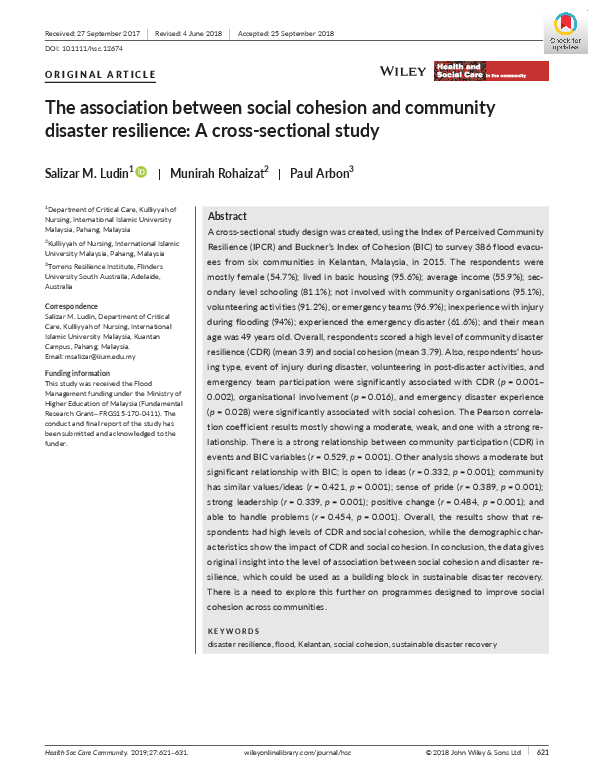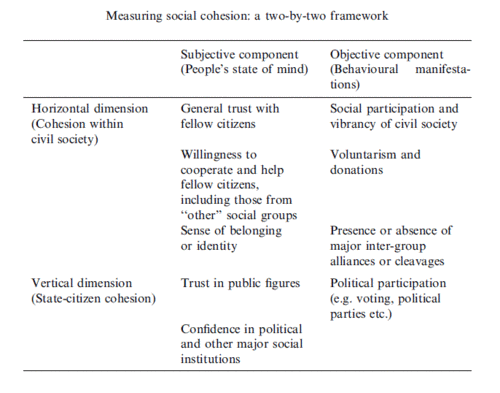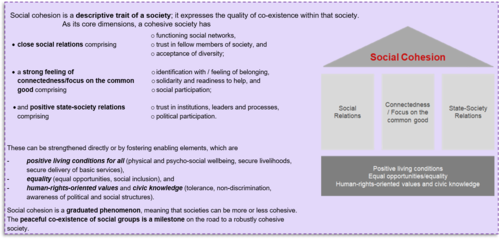The association between social cohesion and community disaster resilience: A cross‐sectional study
Key facts
Cooperation
Summary
A cross‐sectional study design was created, using the Index of Perceived CommunityResilience (IPCR) and Buckner’s Index of Cohesion (BIC) to survey 386 flood evacueesfrom six communities in Kelantan, Malaysia, in 2015. The respondents weremostly female (54.7%); lived in basic housing (95.6%); average income (55.9%); secondarylevel schooling (81.1%); not involved with community organisations (95.1%),volunteering activities (91.2%), or emergency teams (96.9%); inexperience with injuryduring flooding (94%); experienced the emergency disaster (61.6%); and their meanage was 49 years old. Overall, respondents scored a high level of community disasterresilience (CDR) (mean 3.9) and social cohesion (mean 3.79). Also, respondents’ housingtype, event of injury during disaster, volunteering in post‐disaster activities, andemergency team participation were significantly associated with CDR (p = 0.001–0.002), organisational involvement (p = 0.016), and emergency disaster experience(p = 0.028) were significantly associated with social cohesion. The Pearson correlationcoefficient results mostly showing a moderate, weak, and one with a strong relationship.There is a strong relationship between community participation (CDR) inevents and BIC variables (r = 0.529, p = 0.001). Other analysis shows a moderate butsignificant relationship with BIC; is open to ideas (r = 0.332, p = 0.001); communityhas similar values/ideas (r = 0.421, p = 0.001); sense of pride (r = 0.389, p = 0.001);strong leadership (r = 0.339, p = 0.001); positive change (r = 0.484, p = 0.001); andable to handle problems (r = 0.454, p = 0.001). Overall, the results show that respondentshad high levels of CDR and social cohesion, while the demographic characteristicsshow the impact of CDR and social cohesion. In conclusion, the data givesoriginal insight into the level of association between social cohesion and disaster resilience,which could be used as a building block in sustainable disaster recovery.There is a need to explore this further on programmes designed to improve socialcohesion across communities.

Explore the hub further



